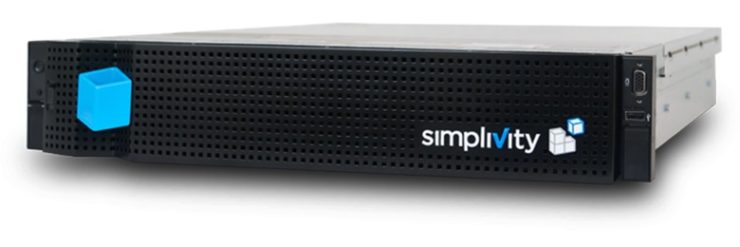A few weeks ago I covered the news that HPE had announced their intention to acquire hyper-converged outfit SimpliVity. Well HPE have wasted no time completing the acquisition and rolling out the first opportunity to bundle SimpliVity with HPE products.
The initial offering announced recently combines the SimpliVity software with the world’s bestselling server a HPE DL 380. The product is being snappily called a HPE SimpliVity 380 with OmniStack, those geniuses in marketing have really out done themselves this time. At least it has escaped the fate of being called a Store something and hopefully Nimble can as well when they join the product line up.
The SimpliVity offering is slightly different from the StoreVirtual VSA in that its component parts are not only software but software and hardware in the form of the OmniStack Accelerator Card. This PCIe based device enables caching, dedupe and compression and form a key part of the SimpliVity solution. From HPE’s point of view this prevents them from bundling the SimpliVity option with all servers like was possible with the VSA. It will be interesting to see in the future if you can add SimpliVity functionality post purchase with a software upgrade and installation of OmniStack Accelerator Card. I am sure someone from SimpliVity/HPE will shout if there are technical barriers to this.
Back to the recent announcement 3 models will be available at launch all based on the DL 380 servers platform and so will take on a 2U form factor. The new models will be all flash only and come in a small, medium and large models. The variance between the models is storage space and additional memory in the larger models to drive the VM’s and throughput.
This is in line with the current OmniCube and 3rd party modelling offerings from SimpliVity. What is different is that they are only available in all flash in the HPE form. It will be interesting to see if this is a strategic decision to go all flash only. The only other difference I could spot with the previous version was that the medium and large models will both run RAID 6 whereas previously it was just the largest model. This seems likely linked to the larger HD size 1.9TB seen in the HPE model v 1.6TB seen in the previous model.
To make sure that you don’t miss any updates, you can get e-mail updates, or follow via Face Book, LinkedIN and Twitter.






